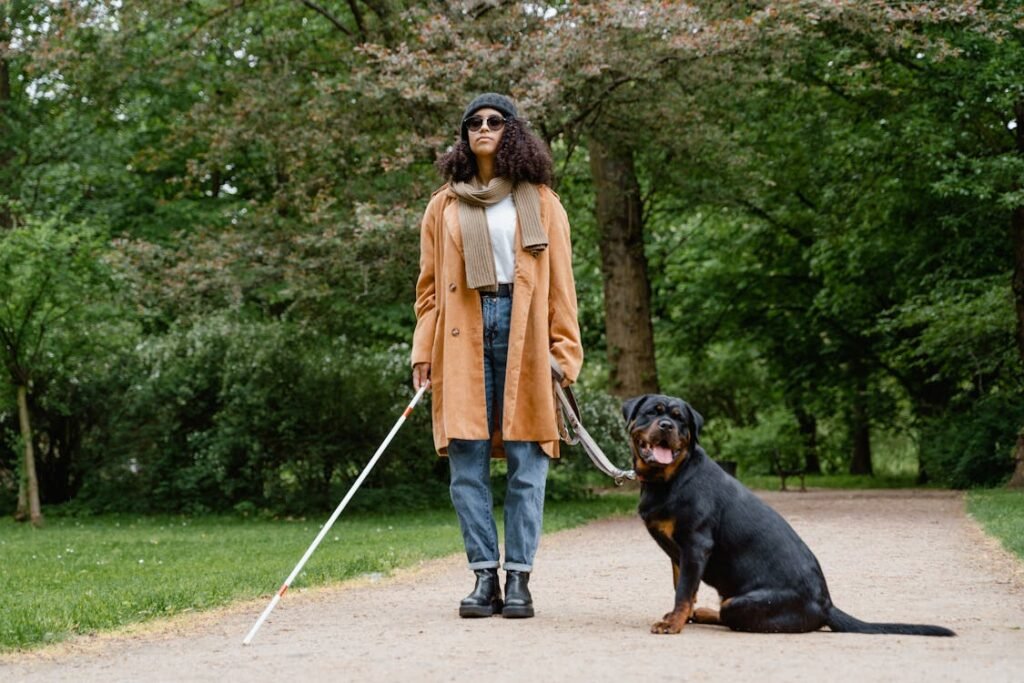Mobility is essential for independence, but for people with physical disabilities, moving around freely can sometimes be a challenge. Whether due to injury, illness, or a long-term condition, difficulty in walking or maintaining balance can affect daily life. Fortunately, mobility aids have transformed the way individuals navigate their surroundings, providing support, stability, and confidence.
From wheelchairs and prosthetic limbs to walking aids and adaptive technology, there are many solutions available to enhance mobility. The right mobility aid depends on an individual’s needs, lifestyle, and level of physical ability. Some aids provide temporary assistance during recovery, while others offer long-term support for everyday movement.
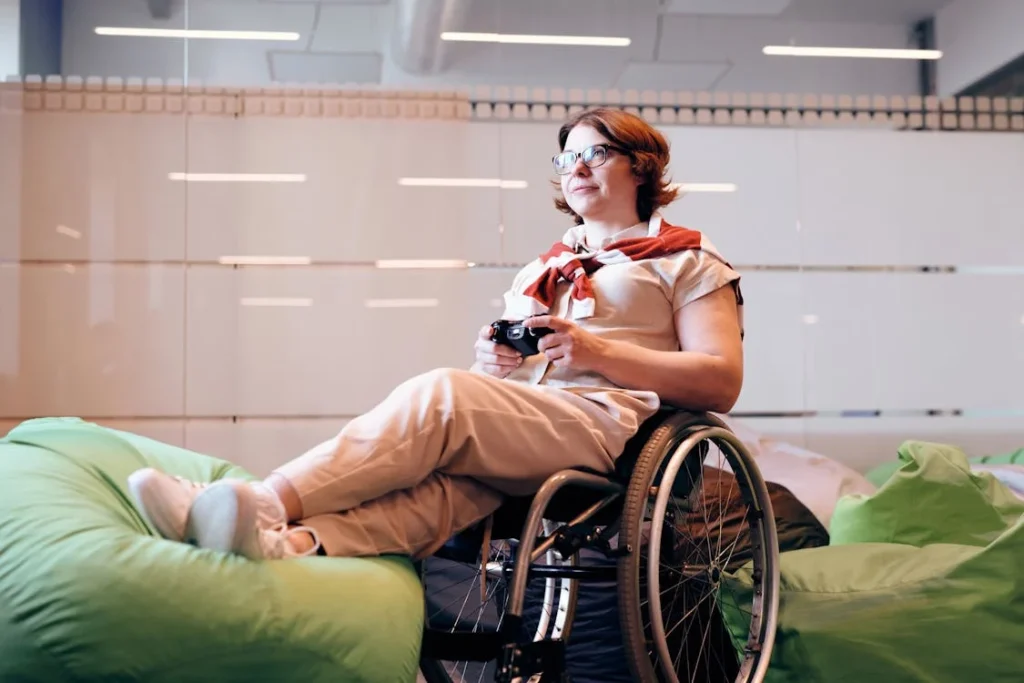
Wheelchairs: A Reliable Mobility Solution
For individuals with significant mobility challenges, wheelchairs provide essential support and independence. Whether used temporarily after an injury or permanently for long-term mobility assistance, the right wheelchair can make daily activities much easier.
Choosing between a manual or powered wheelchair depends on personal needs, lifestyle, and physical ability.
Manual Wheelchairs for Everyday Use
Manual wheelchairs are a common choice for individuals who have upper body strength and can propel themselves without assistance.
These wheelchairs are lightweight, easy to maneuver, and suitable for both indoor and outdoor use. They provide independence for users who have good arm function but require support for their legs.
Caregivers can also push manual wheelchairs when needed, making them a practical option for those who need occasional assistance.
Many manual wheelchairs come with foldable frames, making them convenient for transportation and storage. People who travel frequently or need a compact option for daily use often prefer foldable models.
Seat cushions, backrests, and footrests can be adjusted to improve comfort and reduce strain during prolonged use.
While manual wheelchairs require physical effort to operate, they are cost-effective and highly durable. They do not rely on batteries or charging, ensuring that users can remain mobile without worrying about power supply issues.
Powered Wheelchairs for Greater Independence
For individuals who lack the upper body strength to propel a manual wheelchair, powered wheelchairs offer a more convenient solution. These battery-operated devices allow users to move with minimal effort, using a joystick or touch controls to navigate.
Powered wheelchairs provide advanced comfort and functionality, with features such as reclining seats, adjustable armrests, and customizable controls.
Many models are designed for all-terrain use, making them suitable for outdoor environments, rough surfaces, and long distances.
One of the major benefits of powered wheelchairs is their ability to enhance independence. Users can travel greater distances without experiencing fatigue, making it easier to engage in daily activities, socialize, and work.
While powered wheelchairs are heavier and require charging, their ease of use makes them an excellent option for those who need additional support.
At Robobionics, we understand that choosing the right mobility aid is essential for leading an active and independent life.
Whether you need a manual wheelchair for short-term support or a powered wheelchair for long-term mobility, selecting the right option can make a significant difference.
If you are looking for expert guidance on mobility solutions, contact us today to explore the best options for your needs.
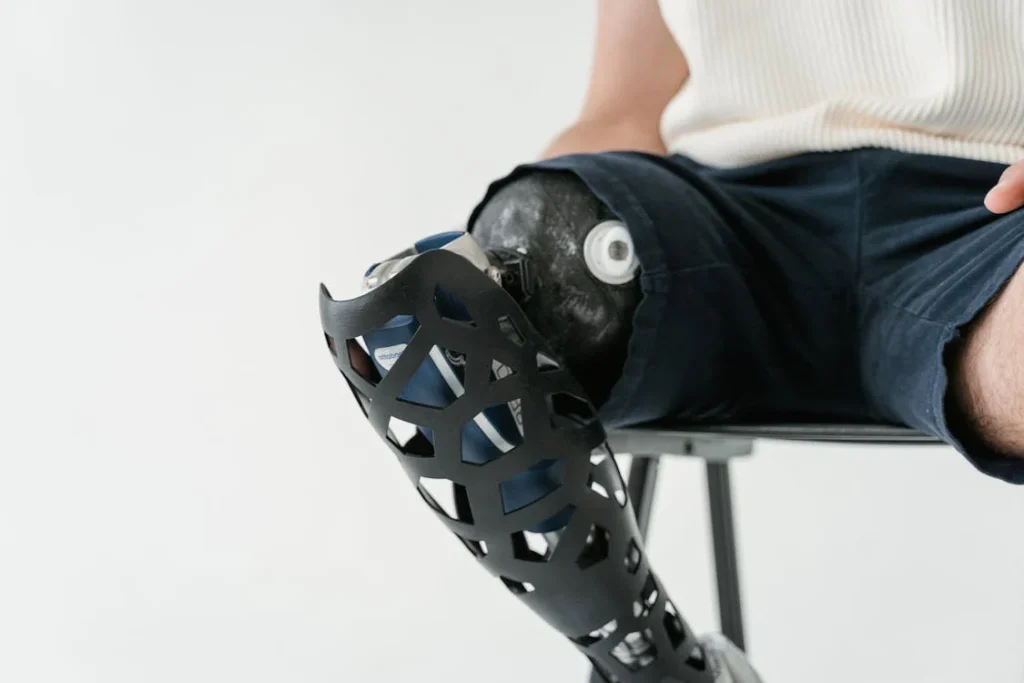
Prosthetic Limbs: Restoring Mobility and Confidence
For individuals who have lost a limb due to injury, illness, or congenital conditions, prosthetic limbs provide an opportunity to regain mobility and independence.
Modern prosthetic technology has advanced significantly, allowing users to perform daily activities with greater ease. The right prosthetic limb depends on the user’s physical needs, lifestyle, and level of activity.
Lower Limb Prosthetics for Walking and Movement
Lower limb prosthetics, including prosthetic legs and feet, are designed to restore mobility for individuals with below-knee or above-knee amputations. These devices enable users to walk, climb stairs, and engage in physical activities while maintaining balance and stability.
For below-knee amputees, prosthetic legs are attached to the residual limb using a socket that provides comfort and a secure fit. These prosthetics are designed to replicate the movement of a natural leg, allowing for smooth walking and a natural stride.
Advanced models feature shock absorption and energy-returning capabilities, which make movement more comfortable and efficient.
Above-knee prosthetics include a knee joint that mimics natural bending and movement. Modern prosthetic knees are designed with smart technology, allowing for better control and balance on different terrains.
Users can adjust walking speeds, navigate slopes, and even perform activities like jogging or cycling, depending on the type of prosthetic they choose.
Upper Limb Prosthetics for Daily Activities
Upper limb prosthetics, such as prosthetic hands and arms, help individuals perform essential tasks like gripping objects, typing, and eating.
Traditional prosthetic hands provide basic functionality, while modern bionic prosthetics offer advanced features such as individual finger movement, pressure control, and even sensory feedback.
At Robobionics, we specialize in innovative prosthetic solutions like the Grippy™ bionic hand, designed to restore functionality and independence for upper limb amputees.
Grippy™ allows users to perform everyday tasks with ease, offering a lightweight, ergonomic, and intuitive design. If you are looking for a prosthetic that fits your lifestyle and needs, contact us today to explore our cutting-edge solutions.
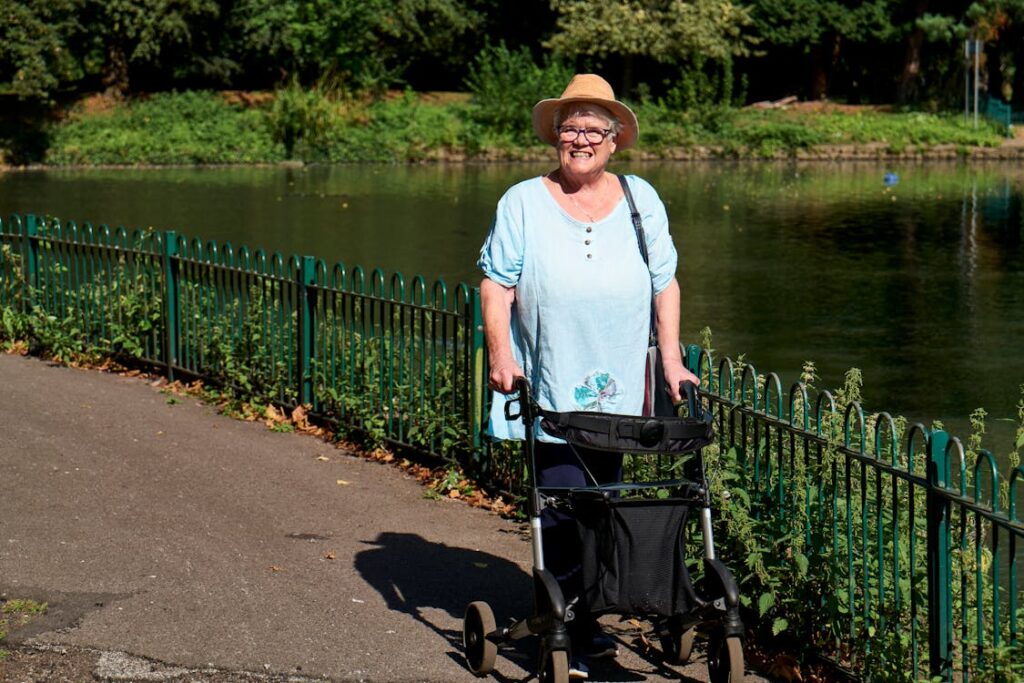
Walking Aids: Support for Stability and Balance
For individuals who experience difficulty walking but do not require a wheelchair, walking aids provide essential support. These devices help maintain balance, reduce strain on the legs, and enhance mobility.
Whether recovering from an injury or managing a long-term condition, the right walking aid can make a significant difference in maintaining independence and preventing falls.
Canes for Light Support and Balance
A cane is a simple yet effective mobility aid for individuals who need light support while walking. It provides extra stability and helps reduce pressure on weak or injured legs. Canes are especially useful for people with mild balance issues, joint pain, or conditions such as arthritis.
Adjustable canes allow users to modify the height for maximum comfort, ensuring that they do not have to bend or strain while walking.
Some models come with ergonomic grips that provide a firm hold, making them easier to use for extended periods. Quad canes, which have four small feet at the base, offer additional stability for users who need more balance support.
Canes are lightweight, easy to carry, and highly convenient for navigating small spaces or short distances. While they do not provide as much support as other walking aids, they are a great option for individuals who require minimal assistance in maintaining stability.
Walkers for Enhanced Support and Weight Distribution
For individuals who need more stability than a cane can provide, walkers offer a sturdy and reliable solution. Walkers are ideal for people with weak legs, significant balance issues, or those recovering from surgery.
They provide full-body support and distribute weight evenly, reducing strain on the lower limbs.
Standard walkers have a frame with four legs that provide excellent stability. They require users to lift and move them forward with each step, which may require some upper body strength.
For those who need a more effortless walking experience, rollators—walkers with wheels—allow for smoother movement without the need for lifting.
Some walkers also come with built-in seats, allowing users to rest whenever needed. This feature is especially helpful for individuals who experience fatigue or need periodic breaks while walking.
Walkers with hand brakes provide additional safety, ensuring that users can control movement on slopes or uneven surfaces.
Crutches for Temporary or Partial Mobility Assistance
Crutches are commonly used for temporary mobility support, such as after an injury or surgery. They help reduce weight-bearing pressure on an injured leg and provide balance while walking.
Unlike canes or walkers, crutches require more upper body strength, as they rely on arm support to aid movement.
There are different types of crutches, including underarm crutches, which rest against the sides of the body, and forearm crutches, which provide wrist and arm support.
Forearm crutches are commonly used by individuals with long-term mobility needs, as they offer better control and reduced strain compared to traditional underarm models.
At Robobionics, we understand that every individual has unique mobility needs. Whether you need a cane, walker, or prosthetic limb, choosing the right aid can greatly enhance your independence.
If you are looking for expert guidance on mobility solutions, contact us today to explore the best options tailored to your lifestyle.
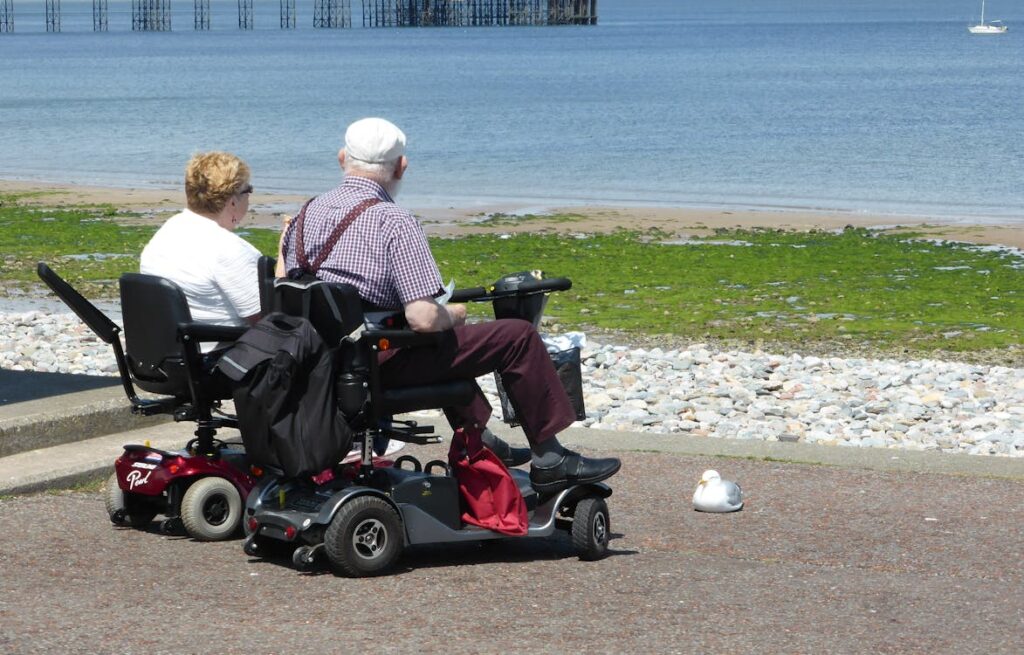
Mobility Scooters: A Comfortable and Efficient Alternative
For individuals who need more mobility assistance than a walker or cane can provide but do not require a wheelchair, mobility scooters offer an excellent alternative.
These battery-powered devices provide a comfortable and efficient way to move around independently, whether at home, in public spaces, or during travel.
Choosing the Right Mobility Scooter
Mobility scooters come in various models, each designed for different levels of use. Compact travel scooters are lightweight and foldable, making them easy to transport in a car or carry on public transportation.
These are ideal for individuals who need occasional mobility assistance and want a portable option for shopping trips or vacations.
Mid-size scooters provide more power and stability, making them suitable for everyday use. These models have larger wheels, better suspension, and higher battery capacity, allowing users to travel longer distances without frequent recharging.
They are designed for both indoor and outdoor use, offering smooth navigation on sidewalks, shopping centers, and public places.
Heavy-duty mobility scooters are built for individuals who need more durability and comfort. These models feature reinforced frames, higher weight capacities, and strong motors that can handle uneven terrain and inclines.
They provide superior stability and are often equipped with padded seating, armrests, and advanced suspension for a smoother ride.
Enhancing Independence with Mobility Scooters
One of the greatest benefits of mobility scooters is the freedom they provide. Unlike wheelchairs, which require either manual propulsion or joystick control, scooters operate with simple handlebar steering, making them easy to use for individuals with limited upper body strength.
Users can travel longer distances without fatigue, allowing them to participate in social activities, go shopping, or visit friends and family without relying on assistance.
Modern mobility scooters also come with smart features, such as LED headlights for night visibility, built-in storage compartments, and USB charging ports for mobile devices.
Some models even integrate with smartphone apps, allowing users to track battery levels and adjust speed settings for a personalized experience.
Safety is a key consideration when using a mobility scooter. Anti-tip wheels, automatic braking systems, and adjustable speed controls ensure a secure and controlled ride.
Many models also have swivel seats that make it easier to get on and off the scooter without straining or needing assistance.
At Robobionics, we believe that mobility should never be a limitation. Whether you need a mobility scooter, wheelchair, or prosthetic solution, we are here to help you find the best option for your lifestyle.
If you are considering a mobility aid that enhances your independence, contact us today to explore innovative solutions designed for comfort and convenience.
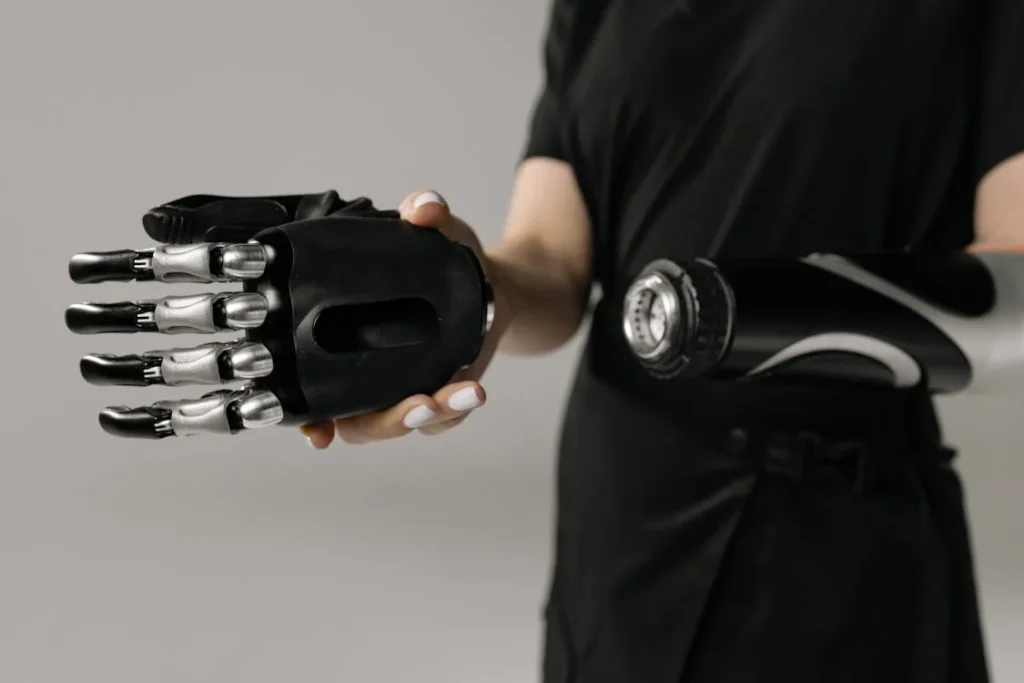
Exoskeletons and Advanced Mobility Technology
Technology has revolutionized mobility aids, and exoskeletons represent one of the most exciting advancements in assistive devices.
These robotic wearables are designed to provide powered support to individuals with mobility impairments, helping them regain movement, stand upright, and even walk again.
Unlike traditional mobility aids, exoskeletons do not just assist movement; they actively enhance it by mimicking the natural motion of the human body.
How Exoskeletons Work
Exoskeletons are wearable robotic structures that attach to the body, typically around the legs and lower back, to provide controlled movement.
They use a system of motors, sensors, and actuators to detect body movements and respond accordingly. When a user shifts their weight or makes an attempt to walk, the exoskeleton responds by guiding the legs in a natural walking pattern.
Some models include a brain-computer interface, where sensors detect neural signals, allowing users to control movement with their thoughts.
These devices are particularly beneficial for individuals with spinal cord injuries, stroke-related paralysis, or degenerative muscle conditions.
By supporting the user’s body weight and providing propulsion, exoskeletons reduce strain on joints and muscles, making it easier to walk with stability.
Some models are designed for rehabilitation, helping individuals regain muscle function through repeated use, while others are built for everyday mobility, allowing users to move independently at home and in public spaces.
The Health Benefits of Exoskeleton Technology
One of the most significant advantages of exoskeletons is their ability to provide health benefits beyond mobility. For individuals who spend extended periods in a wheelchair, sitting for long hours can lead to poor circulation, muscle atrophy, and pressure sores.
Exoskeletons enable users to stand and walk, improving blood flow and reducing the risk of complications associated with prolonged sitting.
Regular use of exoskeletons helps strengthen muscles and bones by stimulating weight-bearing movement. For individuals with partial mobility, the device allows them to engage muscles that would otherwise remain inactive.
This can slow down muscle degeneration, improve coordination, and even retrain the nervous system to support natural walking patterns.
Mental well-being also improves when individuals can stand and interact at eye level rather than being confined to a seated position. Many users report increased confidence, reduced stress, and an improved sense of independence when using exoskeleton technology.
Being able to move around without complete reliance on a wheelchair opens new possibilities for social participation, work, and recreation.
Exoskeletons for Rehabilitation and Daily Use
Rehabilitation-focused exoskeletons are commonly found in physiotherapy centers and hospitals, where they are used to assist patients recovering from spinal injuries or strokes.
These devices help retrain the body by encouraging repetitive walking motions, improving coordination, and gradually rebuilding strength in the lower limbs.
Many rehabilitation centers use robotic-assisted gait training, where exoskeletons guide patients through walking exercises, helping them regain function over time.
For individuals seeking mobility assistance beyond rehabilitation, everyday-use exoskeletons are becoming increasingly available.
These wearable devices allow users to walk independently, navigate outdoor terrain, and perform basic daily activities without relying on traditional walking aids. Some models are lightweight and portable, making them convenient for home and public use.
While exoskeletons were once primarily used in medical settings, advancements in battery life, materials, and AI-driven control systems have made them more practical for personal use.
Some newer models feature adjustable support levels, allowing users to customize how much assistance they receive based on their individual needs.
The Future of Advanced Mobility Aids
As technology continues to evolve, exoskeletons are expected to become even more sophisticated. Researchers are working on AI-driven exoskeletons that can predict user intentions and respond in real time, creating an even more natural walking experience.
Improvements in materials, such as lightweight carbon fiber, are making these devices more comfortable for long-term use.
Another exciting development is the integration of brain-machine interfaces, where exoskeletons respond directly to neural signals.
This technology has the potential to restore movement for individuals with severe spinal cord injuries, allowing them to walk again with minimal effort.
Wireless connectivity is also improving, enabling users to adjust settings through smartphone apps or receive real-time feedback on their walking patterns.
At Robobionics, we stay at the forefront of assistive technology, ensuring that individuals with physical disabilities have access to cutting-edge mobility solutions.
While exoskeletons represent a futuristic vision of mobility assistance, our advanced prosthetic solutions, like the Grippy™ bionic hand, already provide individuals with enhanced functionality and independence.
If you are interested in learning more about modern mobility aids, contact us today to explore the best solutions tailored to your needs.
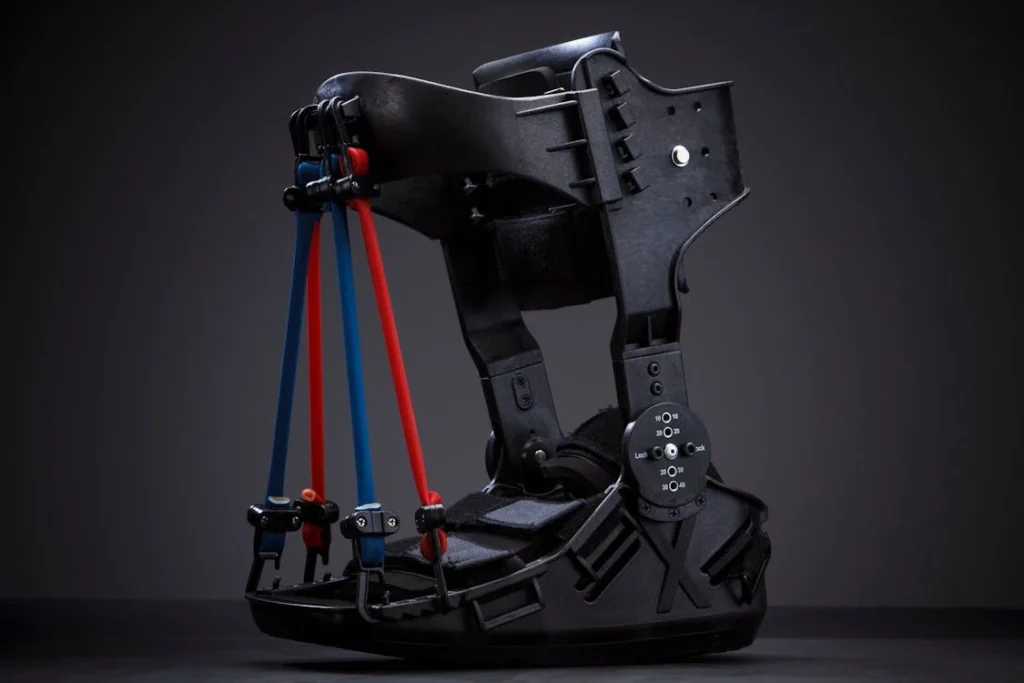
Orthotic Devices: Support for Improved Mobility and Stability
Orthotic devices play a crucial role in enhancing mobility for individuals with physical disabilities. Unlike prosthetics, which replace missing limbs, orthotics provide support and alignment for existing limbs, helping users move more efficiently and reducing pain or strain.
These devices assist individuals with muscle weakness, joint instability, or neurological conditions that affect movement.
How Orthotics Improve Mobility
Orthotic devices are designed to correct posture, support weakened muscles, and reduce strain on joints. They help individuals walk with greater ease by improving alignment and reducing the risk of falls.
Many people with conditions such as cerebral palsy, muscular dystrophy, stroke-related mobility issues, and spinal cord injuries benefit from orthotic support.
Braces and splints are among the most commonly used orthotic devices. They provide stability for the legs, ankles, or feet, ensuring that users can maintain balance while walking.
Some braces restrict unnecessary movement to prevent injury, while others enhance movement by guiding joints into proper alignment.
Custom-molded orthotics are particularly beneficial for individuals with unique mobility challenges. These devices are designed to fit the user’s specific body shape, ensuring comfort and maximum support.
Orthotic shoe inserts help individuals with foot deformities or arch problems maintain proper walking posture, reducing pain and fatigue.
Types of Orthotic Devices for Mobility
Ankle-foot orthoses (AFOs) are commonly used to support the ankle and foot. These lightweight devices stabilize weak muscles, preventing foot drop—a condition where the foot drags while walking. AFOs allow users to take confident steps without tripping or losing balance.
Knee-ankle-foot orthoses (KAFOs) provide additional support by extending up to the knee. They help individuals with significant lower limb weakness maintain stability while standing or walking.
These orthotic devices are often used by people with conditions affecting multiple joints, such as polio or spinal cord injuries.
Hip-knee-ankle-foot orthoses (HKAFOs) offer full-leg support for individuals with severe mobility impairments. These devices enable standing and assisted walking, often in combination with crutches or walkers.
Some advanced models are designed with robotic components that assist movement, helping users take steps with minimal effort.
Upper limb orthotics, such as wrist splints and elbow braces, provide support for individuals with limited arm strength. These devices help users perform daily tasks such as writing, gripping objects, and using tools with greater ease.
Modern upper limb orthotics are designed with lightweight materials, ensuring that they do not restrict natural movement while providing the necessary support.
Enhancing Daily Life with Orthotic Support
Orthotic devices improve mobility, reduce discomfort, and enable individuals to engage in everyday activities with greater independence.
They work alongside other mobility aids, such as prosthetics and walking supports, to enhance movement and stability. For many individuals, orthotics are a key part of rehabilitation, helping them regain function after an injury or surgery.
At Robobionics, we recognize that mobility solutions must be tailored to each individual’s needs. Whether you require orthotic support, prosthetic limbs, or other mobility aids, we are here to help.
If you are looking for expert guidance on improving your mobility, contact us today to explore the best assistive solutions for your lifestyle.
Conclusion
Mobility aids empower individuals with physical disabilities to move freely, maintain independence, and engage in everyday activities with confidence. Whether it’s a wheelchair for enhanced mobility, a prosthetic limb for natural movement, a walking aid for balance, or an advanced exoskeleton for rehabilitation, the right mobility solution can significantly improve quality of life.
Choosing the best mobility aid depends on individual needs, lifestyle, and comfort. With advancements in assistive technology, modern mobility solutions are now more efficient, ergonomic, and adaptable than ever before. From smart-powered wheelchairs to custom orthotics, these innovations are designed to provide better mobility and greater freedom.
At Robobionics, we are committed to delivering high-quality mobility solutions, including advanced prosthetics like the Grippy™ bionic hand, to help individuals regain control over their movement. If you are looking for expert guidance on mobility aids tailored to your needs, contact us today and take the next step toward greater independence.



